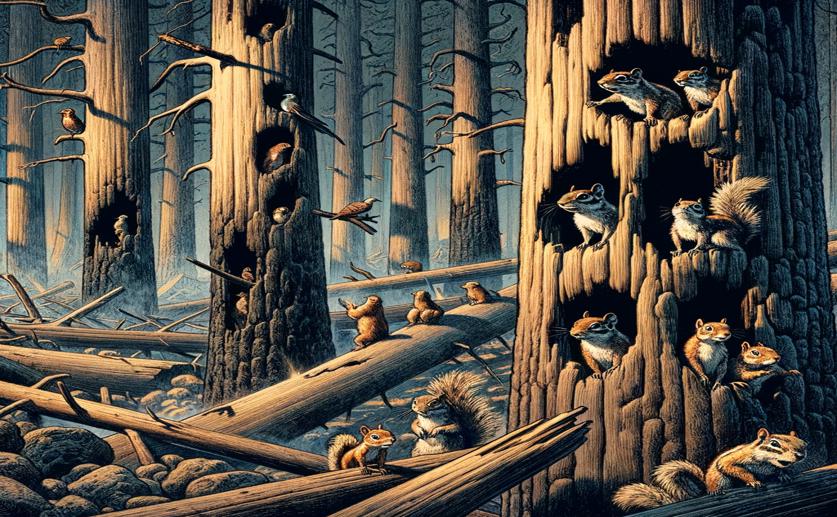
Wildfire Effects on Tree Hollows and Their Impact on Tree-Dwelling Animals
Jim Crocker
4th May, 2024

Image Source: Natural Science News, 2024
Key Findings
- In Australia's Eucalyptus forests, the Black Summer bushfires affected tree hollows, crucial for wildlife shelter
- Post-fire, smaller trees are more likely to have hollows, indicating fire may accelerate hollow formation
- Despite severe fires, the number of hollow-bearing trees remained stable, offering hope for animal recovery
References
Main Study
1) How an unprecedented wildfire shaped tree hollow occurrence and abundance—implications for arboreal fauna
Published 3rd May, 2024
https://doi.org/10.1186/s42408-024-00274-y
Related Studies
2) The effects of wildfire on mortality and resources for an arboreal marsupial: resilience to fire events but susceptibility to fire regime change.
3) Abrupt fire regime change may cause landscape-wide loss of mature obligate seeder forests.
4) Wildfire refugia in forests: Severe fire weather and drought mute the influence of topography and fuel age.
5) Assessing nitrogen fixation in mixed- and single-species plantations of Eucalyptus globulus and Acacia mearnsii.
Journal: Tree physiology, Issue: Vol 27, Issue 9, Sep 2007



 4th March, 2024 | Jenn Hoskins
4th March, 2024 | Jenn Hoskins